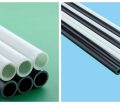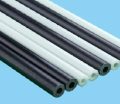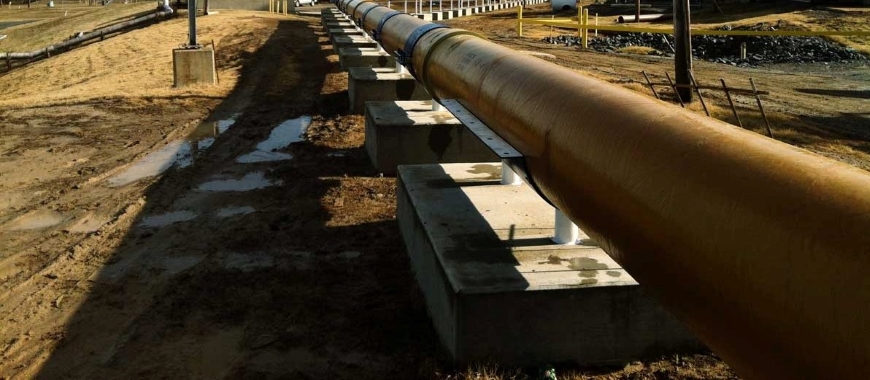
Green Thread fiberglass pipe: durable, epoxy-lined for acids, caustics, hot water, and industrial waste applications. Green Thread fiberglass pipe is a specialized type of piping made from a combination of fiberglass and amine-cured epoxy resins. Known for its high corrosion resistance, strength, and durability, this type of pipe is widely used in industries handling corrosive substances like dilute acids, caustics, and produced water. Green Thread fiberglass pipe has become a reliable solution in environments where traditional materials like steel may fail due to corrosion. It plays a crucial role in the fiberglass piping industry, offering a versatile option for industrial applications, including oilfields, industrial waste management, and condensate return systems. Its lightweight design and high pressure tolerance make it ideal for various demanding scenarios, especially as a durable choice among FRP pipe solutions.
Simplifying Your Life: Key Functionalities
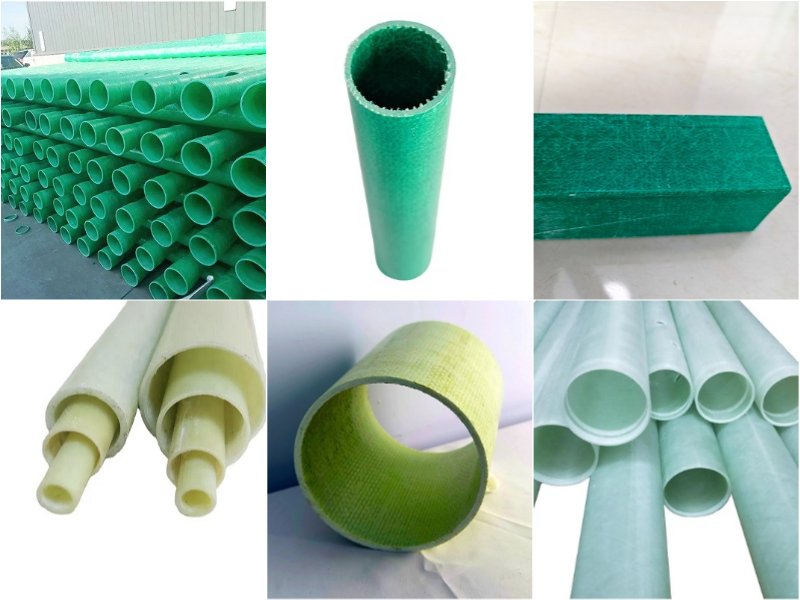
| Attributes | Details |
|---|---|
| Place of Origin | Hebei, China |
| Brand Name | GangLong Fiberglass |
| Product Name | Green Thread Fiberglass Pipe |
| Material | Fiberglass Reinforced Plastic |
| Technology | Rolling, Pultrusion and Molding |
| Surface Treatment | Smooth, Plastic Coating, Painting, Sandblasting |
| Processing Services | Uncoiling, Forming, Welding, Punching, Cutting |
| Color | Green |
| Shape | Custom Shape |
| Size | Custom Size |
| Thickness | Custom Thickness |
| Length | Custom Length |
| Quality | High Quality |
| Features | Durable, High Strength |
| Advantages | Flexible and Corrosion-resistant |
| Certificate | ISO9001 |
| Applications | Construction, Industry, Agriculture, Electricity, Others |
| Sales Unit | Single Item |
| Supply Capacity | 100 Tons/Month Fiberglass Pipe |
What is Green Thread Fiberglass Pipe?
Green thread fiberglass pipe is a specialized piping solution known for its durability, corrosion resistance, and lightweight nature. Made from reinforced fiberglass and amine-cured epoxy resin, this type of pipe is designed to meet the needs of industries requiring robust, long-lasting performance in challenging environments. It is commonly used in sectors such as oil and gas, wastewater management, and chemical processing, where corrosion resistance, high durability, and reliability are essential.
Material Composition
Green thread fiberglass pipe is constructed from fiberglass—a strong material made of fine glass fibers—bonded together using a thermosetting resin. This combination results in a pipe that not only provides high strength but also resists a wide range of chemical agents. The use of amine-cured epoxy resin in its design gives the pipe superior resistance to corrosion, especially against harsh chemicals like acids and alkalines, making it ideal for transporting corrosive fluids and gases.
Performance in Harsh Environments
Green thread fiberglass pipe stands out due to its blend of strength and flexibility. In environments where traditional metal pipes would corrode or degrade due to exposure to chemical agents or extreme temperatures, green thread fiberglass pipe provides long-lasting performance. It is particularly well-suited for demanding industrial settings, including chemical transport, oilfield operations, and water treatment facilities.
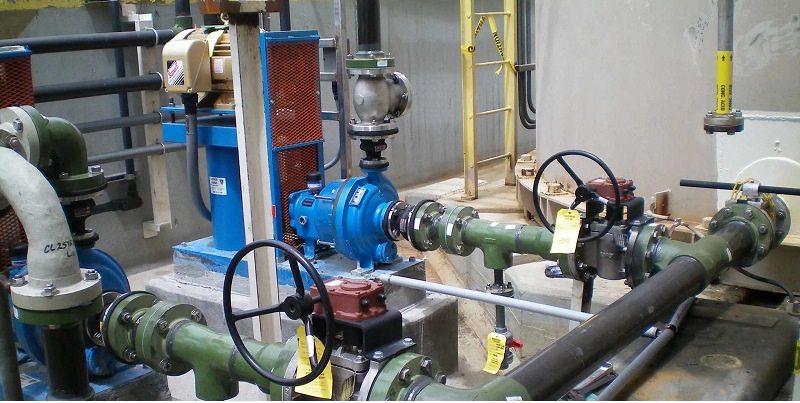
Key Features of Green Thread Fiberglass Pipe
The unique properties of Green Thread fiberglass pipe stem from its innovative design and manufacturing process. These characteristics make it a robust and efficient solution for many industrial applications, where both strength and corrosion resistance are paramount.
Filament Wound Manufacturing Process
The manufacturing process of Green Thread fiberglass pipe is based on the advanced filament winding technique, which involves winding continuous glass filaments around a rotating mandrel. This method ensures uniformity in the pipe’s structure and contributes to its high tensile strength. During production, the filaments are impregnated with amine-cured epoxy resins, which play a key role in enhancing the pipe’s durability and resistance to chemical attacks.
This manufacturing process allows for the production of pipes in various sizes, typically ranging from 1 inch to 24 inches in diameter, depending on the specific requirements of the application. At GangLong Fiberglass, custom sizes can also be requested, ensuring that the pipe fits perfectly into any industrial system. The use of filament winding ensures that Green Thread fiberglass pipe offers consistent performance in high-pressure environments, making it suitable for handling chemicals and other hazardous substances.
Corrosion Resistance with an Amine-Cured Epoxy Resin Liner
One of the standout features of Green Thread fiberglass pipe is its exceptional corrosion resistance. This is primarily due to the amine-cured epoxy resin liner, which is applied as a corrosion barrier. This liner is reinforced with a resin-rich surfacing veil, further improving the pipe’s ability to resist the damaging effects of corrosive substances.
In industries such as oil and gas, where pipes are often exposed to harsh chemicals and gases, corrosion can significantly reduce the lifespan of traditional materials like steel. Green Thread fiberglass pipe, with its enhanced resistance to chemicals such as hydrogen sulfide and brine, offers a much more durable solution. The use of clear epoxy resin for FRP pipe as a liner helps protect the pipe from internal corrosion, ensuring a longer service life and reducing the need for frequent maintenance or replacement.
High Strength and Durability Under Various Conditions
In addition to its corrosion resistance, Green Thread fiberglass pipe is known for its high strength and durability. The combination of fiberglass and epoxy resin creates a material that can withstand extreme pressures, making it ideal for use in high-stress industrial applications. This type of pipe can handle pressure ratings from 225 to 450 psig, depending on the specific diameter and wall thickness, making it essential to consult the FRP pipe pressure rating for accurate specifications.
The durable nature of Green Thread fiberglass pipe also makes it resistant to environmental factors, such as temperature fluctuations and mechanical stress. GangLong Fiberglass products are designed to operate at temperatures up to 225°F (107°C), which is critical for industries that involve the transport of hot liquids or gases. The ability to endure such conditions without losing strength or becoming compromised ensures that Green Thread fiberglass pipe remains a reliable option even in the most demanding environments.
Applications of Green Thread Fiberglass Pipe
Green thread fiberglass pipe is a versatile and durable piping solution, ideal for a wide range of industries requiring resistance to corrosion and high-pressure performance. Due to its unique composition of fiberglass and amine-cured epoxy resin, this pipe is widely used in demanding applications across several sectors.
Oil and Gas Industry
In the oil and gas industry, Green thread fiberglass pipe is commonly used for transporting corrosive fluids like produced water, hydrocarbons, and chemicals. Its ability to resist corrosion from harsh substances like hydrogen sulfide and seawater makes it a valuable alternative to traditional metal pipes, which often fail in such challenging environments. Its lightweight nature also reduces installation costs, particularly in offshore and remote applications.
Chemical Processing
In chemical plants, Green thread fiberglass pipe is essential for handling strong acids, caustic solutions, and other reactive chemicals. The amine-cured epoxy liner offers excellent protection against internal damage, ensuring safe transport of hazardous substances while reducing maintenance needs. Its resistance to chemical degradation makes it a reliable choice for these high-risk environments.
Water Treatment and Wastewater Management
Municipalities benefit from Green thread fiberglass pipe in water and wastewater management systems. Its resistance to chemical degradation ensures that it can handle aggressive substances without deteriorating, making it a cost-effective solution for long-term infrastructure projects. In addition, its smooth internal surface minimizes friction, improving the efficiency of fluid transport, whether for potable water or wastewater.
Marine and Offshore Applications
Green thread fiberglass pipe is also used in marine environments, where its resistance to saltwater corrosion is crucial. It is commonly deployed in offshore platforms for transporting seawater, chemicals, and other fluids, ensuring longevity and reliability even in extreme conditions.
Future Applications and Growth
With ongoing advancements in installation technologies like micro-tunneling and slip-lining, Green thread fiberglass pipe is poised to play an increasingly important role in pipeline projects. Its lightweight design and corrosion-resistant properties make it ideal for projects requiring minimal disruption to the surface, such as in urban areas or environmentally sensitive regions.
Overall, Green thread fiberglass pipe’s strength, corrosion resistance, and versatility make it an ideal choice for industries dealing with aggressive chemicals, high pressures, and extreme environments. Its broad range of applications in the oil and gas, chemical processing, municipal, and marine sectors demonstrates its reliability and effectiveness in meeting modern industrial needs.
Advantages of Green Thread Fiberglass Pipe Over Traditional Materials
Green thread fiberglass pipe presents numerous advantages over traditional materials such as steel, PVC, and concrete, making it a top choice for industries dealing with demanding environments, corrosive substances, and high-pressure systems. With its impressive durability, corrosion resistance, and lightweight design, it outperforms steel and other conventional materials in several key aspects.
Corrosion Resistance
One of the most significant advantages of Green thread fiberglass pipe is its exceptional corrosion resistance. Unlike steel, which is prone to rust and degradation when exposed to moisture or harsh chemicals, Green thread fiberglass pipe remains highly resistant to corrosion. The pipe is lined with a protective amine-cured epoxy resin, which prevents damage from corrosive substances. This feature ensures longer pipe life, making it ideal for use in environments like oil fields, chemical processing plants, and wastewater treatment systems, where resistance to corrosion is critical.
Lightweight and Easy Installation
Green thread fiberglass pipe is significantly lighter than traditional materials such as steel and concrete. This lighter weight results in easier transportation and installation, leading to lower installation costs. The reduced need for heavy lifting equipment minimizes emissions and environmental impact, contributing to a more sustainable and cost-effective installation process. Its easy handling and quick installation make it an ideal choice for large-scale industrial projects that require efficiency and cost savings.
High Strength and Pressure Resistance
Despite its lightweight construction, Green thread fiberglass pipe maintains high strength and can withstand high pressures. It has pressure ratings of up to 450 psig, making it suitable for demanding industries like oil and gas, where pipes are subject to substantial stress. This ability to endure high-pressure conditions ensures that the pipe can transport fluids in extreme environments without failure, such as in produced water systems or condensate return pipelines. Its strength and pressure resistance make it a reliable material for harsh operational conditions.
Lower Life Cycle Cost
Green thread fiberglass pipe offers lower life cycle costs compared to traditional materials. While steel pipes may require ongoing maintenance to prevent rust and degradation, Green thread fiberglass pipe requires minimal upkeep. This results in fewer maintenance needs, reducing long-term costs for industries. Additionally, the longer service life of Green thread fiberglass pipes, due to their resistance to corrosion and other environmental factors, further minimizes the need for frequent repairs and replacements, making them a cost-effective solution over time.
No Coatings or Liners to Maintain
Unlike steel or concrete pipes, Green thread fiberglass pipes do not require coatings or liners. This eliminates the need for regular inspections and maintenance of protective coatings that can degrade over time. The natural corrosion resistance of fiberglass ensures that the pipe retains its integrity without the risk of coating breakdown, providing long-term reliability without the added expense of maintenance.
Greater Flow Efficiency and Energy Cost Savings
Green thread fiberglass pipe’s smooth inner surface provides greater flow efficiency by minimizing friction, which helps to reduce energy consumption in fluid transport systems. The smooth interior allows fluids to flow more easily, reducing the need for excessive pumping power. This energy efficiency leads to cost savings over the long term, especially in large-scale industrial systems, where energy usage can be a significant operational expense.
Low Maintenance and Long Service Life
Due to its durable construction and corrosion-resistant properties, Green thread fiberglass pipe requires minimal maintenance compared to traditional materials like steel, which need regular upkeep to prevent rust and degradation. The pipe can operate for extended periods without significant repairs or replacements, reducing downtime and operational costs. Its longevity ensures that industries can continue to rely on the same piping systems for many years, making it a highly efficient and long-term solution.
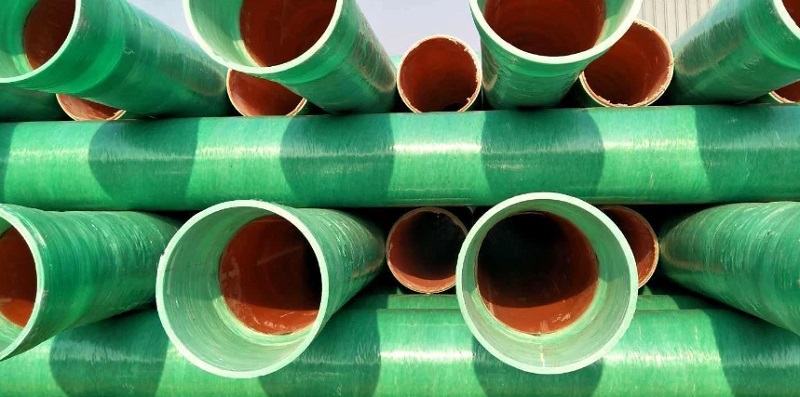
Green Thread Fiberglass Pipe Sizes and Specifications
Green thread fiberglass pipe is available in a wide range of sizes and specifications, making it highly adaptable for various industrial applications. This versatility ensures that the pipe can meet the specific needs of each project, whether it requires handling different fluid flow capacities, pressure levels, or temperature conditions. Below are the key aspects of Green thread fiberglass pipe’s sizes and specifications.
Range of Sizes and Diameters
Green thread fiberglass pipe is manufactured in a broad spectrum of sizes to accommodate various flow requirements. Typically, the pipe sizes range from 1 inch to 24 inches in diameter, which allows for flexible installation in different types of systems. This range covers small-scale applications with limited flow requirements, as well as large-scale systems that require high-volume fluid transport. The adaptability of the pipe size ensures that it can fit seamlessly into both residential and large industrial setups, providing reliable and efficient fluid transportation across industries.
Pressure Ratings
Green thread fiberglass pipe is specifically designed for systems that require high-pressure handling capabilities. The pipe comes with pressure ratings ranging from 225 psig to 450 psig, ensuring its suitability for both low-pressure and high-pressure systems. These pressure ratings make it an ideal choice for industries that handle fluids under substantial pressure, such as oil and gas, chemical processing, and water treatment plants. The ability to handle a wide range of pressures allows for flexible use in different environments, from regular fluid transport to more demanding high-pressure applications, where the safety and integrity of the system are paramount.
Temperature Tolerance
Green thread fiberglass pipe offers impressive temperature tolerance, capable of withstanding temperatures up to 225°F (107°C). This high-temperature resistance makes it an excellent choice for transporting both cold and hot fluids. Applications that involve heated liquids or steam, such as oilfields, industrial hot water systems, and chemical processing plants, benefit from the pipe’s ability to maintain its integrity under varying thermal conditions. This feature is crucial in ensuring reliable performance in environments where temperature fluctuations are common, preventing system failures that could otherwise result from thermal degradation.
Versatility in Demanding Environments
The combination of high pressure and high temperature ratings allows Green thread fiberglass pipe to perform reliably in demanding industrial environments. Its durability under stress makes it the preferred choice for industries where safety, reliability, and long-term performance are essential. Whether used in offshore oil rigs, refineries, or chemical plants, the pipe maintains its functionality, even under extreme operational conditions. Its strength and resilience ensure that industries can continue to rely on its performance, reducing the need for frequent maintenance and replacements.
Additional Specifications
Green thread fiberglass pipe is manufactured to meet the highest industry standards, ensuring it provides long-lasting and dependable service. The pipes are often designed with a smooth inner surface, reducing friction and improving flow efficiency. This feature results in energy savings by lowering pumping requirements and reducing operational costs in the long term. Additionally, the pipe’s resistance to abrasions ensures its durability in systems that carry solid or gritty materials.
Cost-Effectiveness and Longevity
The pipe’s ability to withstand high pressures and temperatures without requiring extensive maintenance or frequent replacements helps industries reduce their life cycle costs. Green thread fiberglass pipes require minimal upkeep compared to traditional materials such as steel or PVC, which often require coating maintenance or dealing with corrosion issues. This makes Green thread fiberglass pipe a cost-effective solution over its lifespan, contributing to better budget management for industrial projects.
Filament Wound Manufacturing Process for Green Thread Fiberglass Pipe
The manufacturing process of green thread fiberglass pipe involves a technique called filament winding, which is essential for ensuring the pipe’s strength and durability. During filament winding, continuous strands of glass fibers are wound around a rotating mandrel, forming the pipe structure. The glass fibers are impregnated with resin, bonding the fibers together as the pipe is cured in an oven.
Advantages of Filament Winding
The filament winding process offers several key advantages that make it ideal for manufacturing green thread fiberglass pipes. This technique is highly effective in creating strong, durable, and reliable pipes, ensuring their suitability for demanding industrial applications.
Uniform Strength and Consistency
One of the primary advantages of filament winding is its ability to create a uniformly strong pipe with consistent wall thickness and strength. The precision of the winding process ensures that each layer is applied evenly, resulting in a pipe that is structurally sound and resistant to internal and external pressures. This consistency guarantees that the pipe performs reliably under varying operational conditions, providing enhanced safety and durability.
Versatility in Production
Filament winding allows for the production of pipes in a wide range of sizes, from smaller diameters for municipal or laboratory systems to larger pipes for use in oilfields and industrial settings. This flexibility makes it suitable for various industries that require pipes tailored to specific project needs. The adaptability of the process also allows manufacturers to create pipes with varying pressure ratings, temperature tolerances, and customized dimensions, making it an ideal choice for diverse applications.
Reduced Material Waste
Another key benefit of filament winding is its efficient material usage. The process is designed to minimize waste, as only the necessary amount of resin and fiber is applied, ensuring that the materials are used effectively throughout the manufacturing process. This efficiency results in lower production costs and a more sustainable approach, as less material is wasted compared to other manufacturing methods.
Customization for Specific Applications
Filament winding offers a high level of customization, allowing manufacturers to create pipes that meet the exact specifications of a project. Whether it’s a specific diameter, pressure rating, or type of resin, the filament winding process can be adjusted to suit the unique needs of different industries. This flexibility makes it possible to provide specialized solutions for a range of applications, from high-pressure systems to environments that require resistance to extreme temperatures or chemical exposure.
Material Composition and Manufacturing Process
Green thread fiberglass pipe is made from a combination of glass fibers, which provide mechanical strength, and resin, which binds the fibers together and shapes the pipe. The manufacturing process involves several steps to ensure the right combination of materials for optimum performance.
Manufacturing Process Overview
The production process begins with the creation of the fiberglass. Molten glass is extruded through fine holes to form thin strands of glass fibers. These fibers are then combined with a thermosetting resin, which is a plastic material that hardens when exposed to heat. The resin is applied to the fibers using the filament winding or centrifugal casting process. In this step, the resin-coated fibers are wound around a rotating mandrel, forming multiple layers to achieve the desired pipe thickness and strength.
Curing and Final Steps
After the winding or casting process, the pipe is cured at a controlled temperature to harden the resin and bind the fibers together. This curing step ensures that the resin fully bonds with the glass fibers, creating a solid and durable structure. Once the pipe is cured, it is removed from the mandrel. Additional surface treatments may be applied to enhance the pipe’s resistance to UV radiation, mechanical damage, or other environmental factors, improving its overall durability and performance.
Resin Selection and Performance
The choice of resin plays a crucial role in the pipe’s final characteristics. For green thread fiberglass pipes, amine-cured epoxy resin is often used because of its excellent chemical resistance and ability to withstand high temperatures. This resin bonds effectively with the glass fibers, creating a strong composite material that is resistant to chemical degradation. The use of epoxy resin ensures the pipe’s long-lasting performance, even in challenging environments, and helps maintain its integrity over time.
Key Advantages of Using Hollow Fiberglass Tube in Construction
The Key of Green Thread Fiberglass Pipe
Green thread fiberglass pipe is a specialized type of pipe known for its durability, corrosion resistance, and lightweight nature. This type of pipe is primarily made from reinforced fiberglass and is commonly used in industries that deal with harsh chemicals, extreme temperatures, and other challenging conditions. The unique composition of green thread fiberglass pipe makes it an ideal solution for a variety of applications, including oil and gas, water treatment, and chemical processing.
The green thread design offers superior resistance to corrosion, unlike traditional steel or iron pipes, which can degrade over time when exposed to corrosive materials. Furthermore, its lightweight nature compared to metal pipes makes it easier to handle and install, reducing labor costs and installation time. GangLong Fiberglass offers a wide range of green thread fiberglass pipe products, ensuring quality and efficiency across various industrial sectors.
Green Thread Fiberglass Pipe Fittings
One of the most important aspects of a piping system is the fittings used to connect sections of pipe. Green thread fiberglass pipe is no exception, and the fittings available for this type of pipe are designed to ensure a secure and leak-proof connection, even in high-pressure environments. These fittings are engineered to work seamlessly with the green thread fiberglass pipes, contributing to the overall strength and reliability of the piping system.
Green Thread Fiberglass Pipe Joints
Along with fittings, pipe joints play a crucial role in ensuring the structural integrity of a piping system. Green thread fiberglass pipe joints are designed to offer a secure connection between sections of pipe, preventing leaks and maintaining pressure resistance. Joints can be flanged, butt-welded, or threaded, depending on the specific needs of the application, and are critical for maintaining the overall strength and reliability of the pipe system in high-pressure or high-temperature environments.
Green Thread Fiberglass Pipe Lining
In addition to fittings and joints, lining is another key factor that contributes to the overall functionality of green thread fiberglass pipe. The inner surface of the pipe is often lined with a protective resin or coating that enhances its resistance to chemicals, abrasions, and high temperatures. This protective lining ensures that the pipe can transport corrosive fluids or high-temperature materials safely, without compromising the integrity of the pipe. This layer of protection is crucial in industries such as chemical processing and wastewater treatment, where harsh substances are common.
Green Thread Fiberglass Pipe Installation and Support Systems
Alongside the pipes, fittings, joints, and linings, support systems are another critical element for ensuring the stability and longevity of a piping system. Green thread fiberglass pipe requires support brackets and mounting structures that secure the pipe in place and reduce the stress placed on the system during operation. Proper installation and support systems prevent sagging, displacement, and damage to the pipe, ensuring smooth operation in applications that involve fluctuating pressures or temperatures.
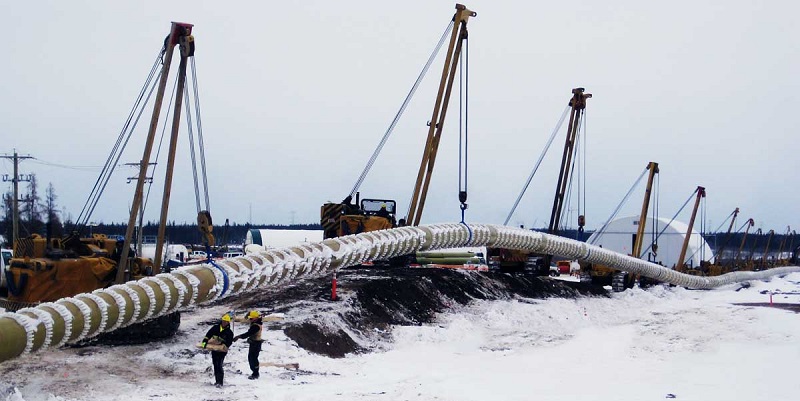
Essential Uses of Filament Wound Fiberglass Tubing in Industry
Series of Green Thread Fiberglass Pipe
Green thread fiberglass pipe is available in a variety of series designed to meet the specific demands of different industrial applications. Each series is tailored to provide the necessary performance characteristics such as pressure resistance, chemical resistance, and temperature tolerance. The different series cater to a broad range of industries, from oil and gas to chemical processing, wastewater treatment, and beyond.
Green Thread Fiberglass Pipe HP Series
The Green Thread Fiberglass Pipe HP Series is specifically designed for high-pressure applications, offering superior performance in environments where traditional piping materials might fail. This series is engineered with advanced resin systems and high-strength fiberglass layers to withstand extremely high internal pressures, making it ideal for use in industries like oil and gas, chemical processing, and water transport systems where high-pressure resistance is crucial.
The HP Series is known for its exceptional durability under challenging conditions, including exposure to harsh chemicals and extreme temperatures. The resin matrix used in the HP Series, typically amine-cured epoxy resin, provides a robust barrier to chemical corrosion, allowing the pipes to perform reliably even when transporting highly corrosive fluids or gases. This makes it an excellent choice for produced water systems, offshore drilling operations, and other high-demand applications in the oil and gas sector.
Features of the Green Thread Fiberglass Pipe HP Series
- High-Pressure Capacity: Designed to handle extreme internal pressures, the HP Series is ideal for systems where high-pressure resistance is a top priority. The pressure rating can go up to 450 psig, depending on the specific application requirements.
- Superior Corrosion Resistance: The amine-cured epoxy resin provides enhanced resistance to corrosive chemicals, ensuring the longevity of the pipe in harsh environments like oilfields and chemical plants.
- Temperature Resistance: With a high-temperature tolerance of up to 225°F (107°C), the HP Series is suitable for systems that involve heated fluids, including steam and hot water transportation.
- Smooth Interior Surface: The smooth inner surface reduces friction, promoting efficient fluid flow and lowering energy costs in long-distance fluid transport systems.
- Customizable Solutions: The HP Series can be customized to meet specific industrial requirements, such as pipe diameter, wall thickness, and additional coatings or linings for enhanced chemical or abrasion resistance.
Other Series of Green Thread Fiberglass Pipe
In addition to the HP Series, Green thread fiberglass pipe is also available in other series, each designed to address the varying needs of industries:
- Standard Series: Ideal for general industrial applications, the Standard Series provides reliable performance at moderate pressures and temperatures. It’s suitable for water distribution systems, irrigation, and non-corrosive fluid transport.
- Chemical Resistant Series: Tailored for industries dealing with harsh chemicals, this series features enhanced chemical resistance and is commonly used in chemical plants, wastewater treatment facilities, and industrial effluent systems. These pipes are specifically designed to handle aggressive substances such as acids and alkalis.
- Low-Pressure Series: Designed for low-pressure environments, this series is used for applications where high pressure is not a concern. It is ideal for cooling water systems, ventilation pipes, and light-duty fluid transport in manufacturing plants.
- High Temperature Series: This series is designed to handle fluids that operate at high temperatures. Common applications include systems that transport heated liquids, steam, or gaseous materials that require the pipe to withstand extreme heat without losing integrity.
Green Thread vs. Red Thread Fiberglass Pipe
When comparing green thread fiberglass pipe with red thread fiberglass pipe, it’s essential to understand the differences in their material composition, applications, and performance characteristics. Both types of pipes are commonly used in industrial and oilfield settings, but they serve different purposes based on the specific needs of the project.
| Aspect | Green Thread Fiberglass Pipe | Red Thread Fiberglass Pipe |
|---|---|---|
| Pressure Resistance | Higher pressure ratings, suitable for high-pressure systems | Lower pressure ratings, suited for moderate pressure systems |
| Chemical Resistance | Superior chemical resistance, especially to harsh chemicals | Good chemical resistance, but not suitable for harsh chemicals |
| Temperature Resistance | Can withstand high temperatures, ideal for hot fluids | Resistant to moderate temperatures, but not for high heat |
| Primary Use Case | Used for transporting corrosive liquids and gases in harsh environments | Used for non-corrosive fluid transport and lighter-duty applications |
| Durability | High durability, suitable for demanding environments like oilfields | Durable, but generally for less demanding environments |
| Cost | Higher cost due to its specialized materials and properties | More cost-effective and budget-friendly |
| Ease of Installation | Requires professional installation due to higher performance specifications | Easier to install, ideal for less complex systems |
| Flow Efficiency | Smooth interior surface that minimizes friction and reduces energy costs | Interior surface is less optimized for flow efficiency compared to green thread pipe |
FAQs about Green Thread Fiberglass Pipe
Green Thread pipe is a fiberglass reinforced plastic (FRP) pipe designed for corrosion resistance and durability in harsh environments. The “green thread” designation comes from its manufacturing process, which includes special resins and reinforcements that make the pipe well-suited for use in chemical processing, wastewater treatment, and other industrial sectors. These pipes are typically lightweight, easy to install, and require minimal maintenance compared to traditional metal pipes. Their resistance to rust and corrosion makes them ideal for transporting chemicals, brine, and other corrosive fluids. Green Thread pipes are often used in applications where the transportation of hazardous or reactive materials requires reliable piping that can maintain structural integrity over time. They are especially valuable in industries where prolonged exposure to chemicals could degrade other types of materials, ensuring long-term safety and efficiency in system operations.
FRP (Fiberglass Reinforced Plastic) pipes are used in a variety of industries due to their high strength-to-weight ratio, corrosion resistance, and long-term durability. Common applications include chemical processing, water treatment plants, desalination facilities, and oil and gas pipelines. In chemical plants, FRP pipes are favored for transporting aggressive chemicals, acids, and other corrosive materials. They are also widely used in marine environments for seawater intake and discharge lines, as well as in wastewater treatment plants where corrosion from treated water or chemicals can be a concern. Additionally, FRP pipes are found in cooling systems, fire protection pipelines, and even underground fuel handling systems, where their ability to resist both external and internal corrosion is essential. Their lightweight nature makes them easier to install than traditional materials like steel or concrete, reducing labor costs and installation time while maintaining performance and longevity.
There are several types of fiberglass pipes designed for various applications, including Green Thread, Red Thread, and Centricast pipes. Green Thread pipes are known for their corrosion resistance and are often used in chemical processing and wastewater treatment industries. Red Thread pipes, on the other hand, are designed to handle higher pressure environments and are commonly found in the oil and gas sector as well as underground fuel systems. Centricast pipes are manufactured through a process called centrifugal casting, which makes them exceptionally strong and uniform in construction, making them suitable for a range of industrial and municipal applications. Other types of fiberglass pipes include epoxy resin-based pipes, which offer enhanced chemical resistance, and vinyl ester-based pipes, which provide additional flexibility and impact resistance. Each type of fiberglass pipe is tailored to specific industry needs, ensuring that there is a suitable option for applications ranging from low-pressure water transport to high-pressure chemical handling.
The difference between red thread fiberglass and green thread fiberglass lies primarily in their applications and composition. Red thread fiberglass typically refers to fiberglass materials that use red-colored threads or fibers in their construction. This type of fiberglass is commonly used for more specialized applications that require higher visibility or specific color coding. Green thread fiberglass, on the other hand, may indicate a material designed for specific applications such as corrosion resistance or chemical compatibility. The color difference does not necessarily affect the mechanical properties of the fiberglass, but it can provide visual cues about the material’s intended use or function. The choice between the two depends largely on the specific environmental and operational requirements, such as exposure to chemicals, temperature, or mechanical stress.
Fiberglass pipe is a versatile material used in various applications across different industries. It’s commonly used in plumbing systems, chemical transport, water distribution, sewage systems, and industrial piping. Due to its lightweight, corrosion-resistant nature, fiberglass pipe is often used in environments where traditional metal pipes may corrode, such as in the oil and gas, chemical processing, and marine industries. Fiberglass pipes also perform well in high-temperature or high-pressure conditions, making them suitable for hot water systems and steam lines. Additionally, fiberglass pipes are used in wastewater treatment plants, irrigation systems, and mining operations, thanks to their ability to withstand harsh chemicals and environmental conditions.
The thickness of fiberglass pipe varies depending on its intended use, pressure rating, and pipe diameter. Generally, fiberglass pipes are manufactured with a wall thickness ranging from 0.125 inches (3.175 mm) to over 1 inch (25.4 mm). For low-pressure applications, thinner walls may suffice, while high-pressure systems will require thicker pipes to ensure safety and structural integrity. Fiberglass pipes are often produced with reinforced layers, giving them added strength while maintaining a relatively light weight compared to traditional metal pipes. The wall thickness is typically determined by the pipe’s pressure class, which can range from 150 psi to over 2000 psi in some cases.
Fiberglass pipe is known for its high strength-to-weight ratio, making it a durable and reliable option for many piping applications. Its strength largely comes from the fiberglass-reinforced polymer composite material, which provides excellent resistance to both internal pressure and external stresses. Fiberglass pipes are capable of withstanding high levels of stress without deforming, making them suitable for applications that require durability in harsh environments. The material’s ability to resist corrosion also enhances its longevity, ensuring it remains strong over time, even in the presence of aggressive chemicals, moisture, and temperature fluctuations. Additionally, fiberglass pipes are lightweight, which makes them easier to transport and install compared to traditional metal pipes, without compromising strength or performance.
Green threadlocker is a type of adhesive used to lock and seal threaded metal fasteners, offering a high level of strength and security. It is typically used when disassembly of the joint is not expected, such as in permanent or semi-permanent fastening applications. The green threadlocker formula is known for its high strength and ability to fill in the gaps between threads, preventing leakage or loosening due to vibration, shock, or thermal expansion. It is commonly used in machinery, automotive applications, aerospace, and electrical equipment where high-stress conditions can cause screws, bolts, and nuts to loosen over time. The green color of the threadlocker indicates that it is typically a high-strength variant, often used in applications where maximum holding power is required.

As the editor of GangLong Fiberglass, I have years of experience and in-depth research, focusing on cable tray products, fiberglass solutions, and grille systems. I incorporate years of industry insights and practical experience into every content, committed to promoting the progress of the industry. At GangLong Fiberglass, my commitment is reflected in every product, from innovative cable trays to durable fiberglass solutions and sturdy grille systems. As an authoritative voice in the industry, my goal is to provide valuable information to professionals and businesses and promote forward-looking solutions.

